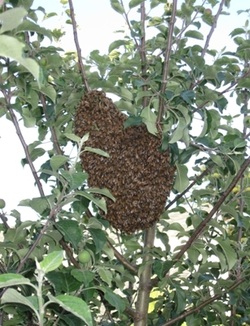
A couple days later, we found either that swarm or a new one in our apple tree, a much more convenient location. This time our friend John, another local beekeeper, said he wanted to capture it to populate one of his empty hives. We caught the whole process on videotape.
Swarms are the natural way that bees form new colonies. When a bee colony begins to run out of room in its current digs, it raises a new queen. The old queen leaves the hive with half of the other bees. The bees will find a place to clump together around the queen somewhere while scout bees look for a new location for the colony to live. The swarm is almost like a liquid glob made of bees and is usually very calm.
The process to capture a swarm is basically to shake it into some container. In this case, we shake it into a standard hive box which John later (at night, when the bees are most calm) took back to his empty hive. The shaking is a little more aggressive here than was perhaps necessary... we've seen some swarms practically poured into boxes.
If the transfer works, the queen bee will have made it into the container. The rest of the bees will eventually follow her. If she did not make it in, the others will start marching out of the box within ten or fifteen minutes. In this case, the capture worked, as we confirm that bees are still headed into the hive a while later.
There's a good article on bee swarms here if you want to learn more. If you come across a swarm, contact your local county's beekeeper association and someone will usually come right out to capture it.
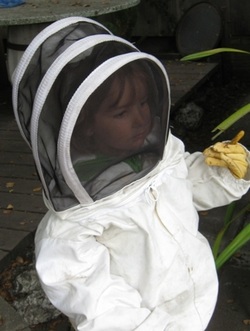
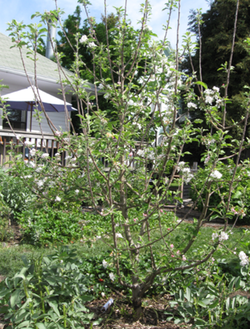
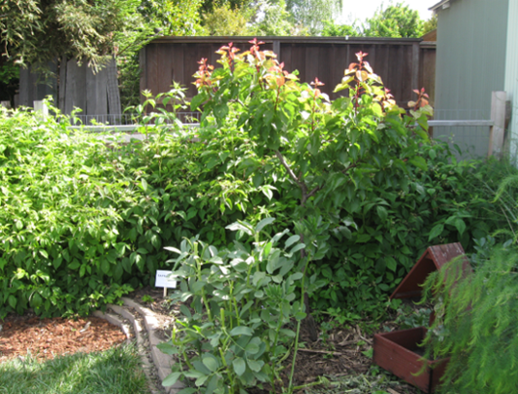

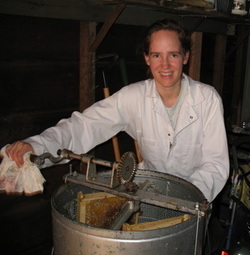
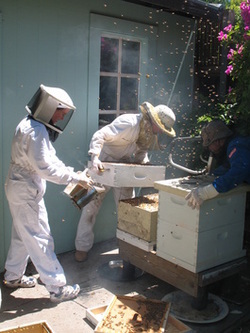
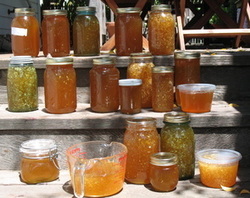
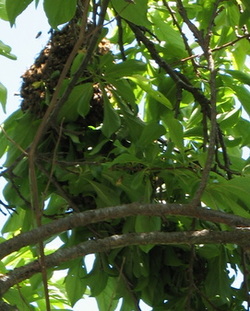
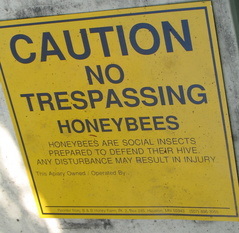
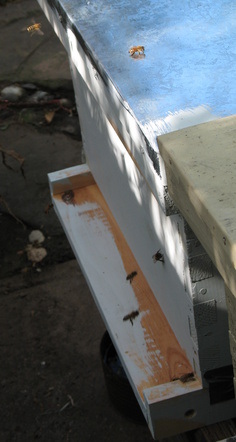
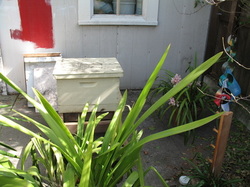
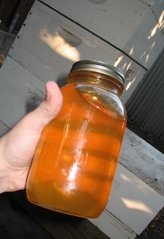
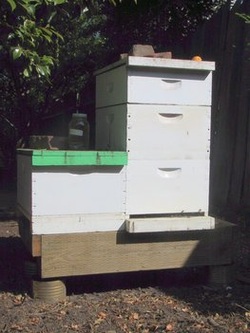
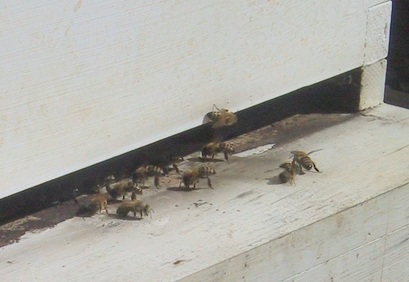
 RSS Feed
RSS Feed